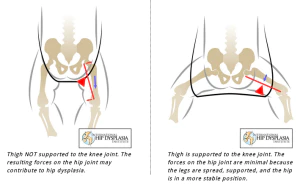Sciatica treatment

The term Sciatica refers to pain which radiates from the lumbar area into one or both lower limbs. This is caused by a problem with the Sciatic Nerve, a large nerve which originates from the lumbo-sacral plexus at levels L4-L5-S1-S2-S3 and runs down the back of each leg. When there is irritation or pressure on the root of the sciatic nerve it can cause pain in the lower back which can spread to the hip, buttock and leg. Typically Sciatica affects only one side of the body. Sciatica can begin suddenly and symptoms can be intermittent or constant.
Causes: Most commonly caused when a herniated disc, spinal bony spur or narrowing of the spinal canal (spinal stenosis) compresses part of the nerve. The nerve can also be compressed/entrapped by a muscle in the buttock area. With a trauma to the proximal hamstring/severe hematoma there can be sciatic symptoms. Also but rarely vascular problems during late-stage pregnancy can cause compression. These causes induce inflammation, pain and often numbness in the affected leg.
Symptoms: The location of symptoms is determined by the spinal level at which the compression is occurring. The pain can vary widely from a mild ache to a sharp or burning sensation or excruciating pain. Sometime it can feel like an electric shock. It can be worse when you cough or sneeze due to increased intra-abdominal pressure and prolonged sitting can also aggravate symptoms. Sometimes there is numbness, tingling or muscle weakness in the affected leg or foot. There can even be pain in one area and numbness in another. There can be weakness standing on tip-toes and the ankle reflex can be diminished in severe cases.
Risk factors: Age related spinal changes, Obesity, Occupation (eg lifting, driving, prolonged sitting), Diabetes (known to increase risk of nerve damage)
Prognosis: Although the pain associated with sciatica can be severe, most cases resolve with non-operative physiotherapy treatment in a few weeks. In severe cases, with significant leg weakness or bowel or bladder changes there may be an indication for surgery. It is important to discuss these symptoms if they are present with a healthcare professional such as your physiotherapist.
Prevention: Regular exercise with particular emphasis on “core” strength, `correct posture particularly in sitting positions, good body mechanics (eg during lifting). The physiotherapist at PB can help you with these measures to prevent occurrence or recurrence of Sciatica.
WHAT TO EXPECT FROM A VISIT TO PERFECT BALANCE WITH SCIATICA:
Thorough assessment including neurological testing (sensation and weaknesses and reflex testing as indicated)
In severe cases we may start with very gentle therapy to reduce acute pain. Some cases may be referred for scanning but in general we will start treatment first and only refer on if appropriate.
Treatment for Sciatica varies depending on the cause but to give you a brief overview:
1. Degenerative Causes: Spinal stabilisation programme reducing excessive movement in specific segments therefor reducing the irritation in these segments. Examples of the type of exercises and :hook-lying marching and variations of bridging.
2. Spondylolisthesis: Flexion based exercises to improve spinal stability.
3. Piriformis Syndrome: Stretching program for the piriformis, hamstring and hip extensors to improve range of movement.
4. Sacro-iliac joint causes: re-alignment therapy, stretching and mobilization of SI joint followed by an exercise programme.
5. Herniated Disc cause: Progressive Spinal Extension Programme with strengthening programme.
6. Spinal stenosis cause: Flexion exercise program to open the spinal canal and therefore reduce irritation. Flexion stretching programme frequently used.





